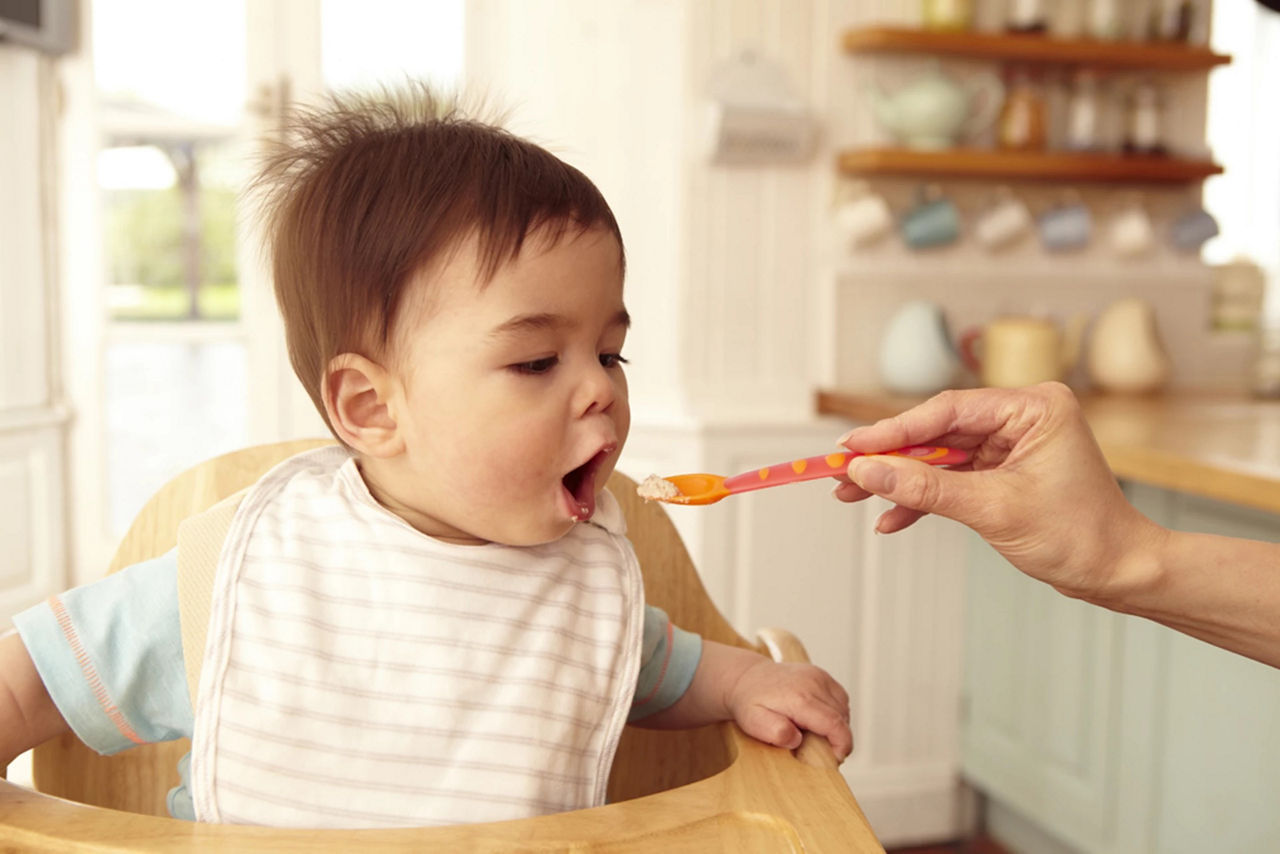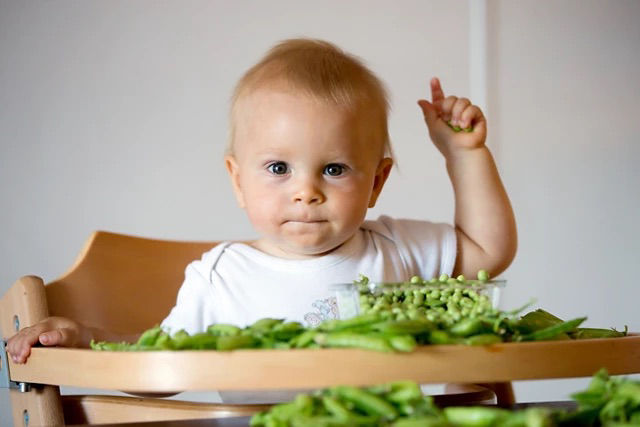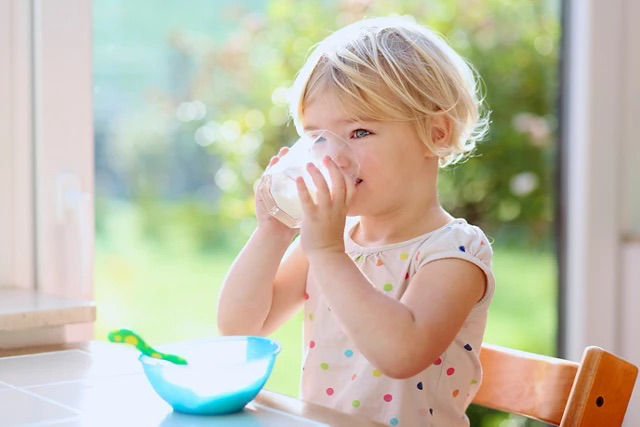Fibre in your baby’s diet
Breast milk is recognised as the best source of nourishment during the first six months of life1. When your baby is around 6 months old and showing signs of readiness, the Department of Health recommends introducing solid foods into their diet2. There are a lot of different nutrients that will make up the foods that you will introduce to them, including fibre.

The two types of fibre
“Dietary fibre” is a term that’s used for plant-based carbohydrates (as opposed to “carbohydrates” such as sugars and starch)3, and there are two main types of fibre; soluble and insoluble.
Soluble fibre is easily dissolved in water and can be found in foods such as fruit and oats.
Insoluble fibre does not easily dissolve in water and can be found in wholegrains and nuts*.
How much fibre do babies need?
In the UK, there’s no daily recommended amount of fibre for children under the age of two. However, when you start weaning at around six months, The European Society for Paediatric Gastroenterology Hepatology and Nutrition (ESPGHAN) recommends to gradually increase the fibre in your baby’s diet, so that by the time they are one year old they are having 5g fibre per day4.
Make sure you slowly and gradually increase the amount of fibre in your baby’s diet, to allow their gut to adjust to small increases over time. It’s also important that your baby has a varied diet.
It can take up to 10 tries or more5 for your baby to welcome a new food into their diet, especially when they're at the very first stages of weaning. Don't forget, your baby has only tasted their usual milk before so new tastes can be somewhat strange.
Having too much fibre may not be the best for your little one. The NHS suggests that foods containing a lot of fibre can fill up small tummies leaving little room for other foods, meaning that your child could feel full before getting the calories and nutrients they need6.
When weaning, you can also introduce your baby to drinking sips of water with meals (from a cup or beaker)7.

Which foods are a good source of fibre?
Lots of foods naturally contain fibre, including some manufactured baby foods. When foods in the supermarket say ‘source of fibre’ on the label, this means that the food has at least 3g of fibre per 100g8, or at least 1.5g of fibre per 100kcal. Some foods may contain at least 6g of fibre 100g, or at least 3g of fibre per 100kcal, which is classed as ‘high fibre’8.
Good sources of fibre for babies:
There are many good sources of fibre that you can incorporate into your little one’s diet once you have started their weaning journey, including:
- Starchy foods such as porridge, baby cereals, sweet potato, pasta and rice
- Beans, pulses, hummus and dahl
- Vegetables, including peas, parsnip, mixed veg (from frozen), green beans, carrot, canned sweetcorn and broccoli
- Fruits such as pear, apple, raspberries and blackberries, plums, banana and orange
- Nuts* such as almonds, peanuts, hazelnuts9.
*Do not give whole nuts to babies and young children due to risk of choking. Provide ground nuts only until they reach the age of five9.
Related articles

Need some help?
You can get quick answers to common questions in our FAQs.
Alternatively, if you need help with general pregnancy or baby advice, or maybe on using or ordering our products - our expert team are always on hand to talk about feeding your baby.
- NHS. Benefits of breastfeeding [Online]. Available at: https://www.nhs.uk/conditions/baby/breastfeeding-and-bottle-feeding/breastfeeding/benefits/ [Accessed: December 2020].
- NHS. Weaning [Online]. Available at: https://www.nhs.uk/start4life/weaning/ready-or-not/ [Accessed: December 2020).
- British Nutrition Foundation. Dietary Fibre [Online]. 2018. Available at: https://www.nutrition.org.uk/healthyliving/basics/fibre.html?limitstart=0 [Accessed: December 2020).
- Agostoni, C., E. Riva and M. Giovannini (1995). "Dietary fiber in weaning foods of young children." Pediatrics 96(5 Pt 2): 1002-1005.
- NHS. What to feed your baby [Online]. Available at: https://www.nhs.uk/start4life/weaning/what-to-feed-your-baby/7-9-months/#anchor-tabs [Accessed: December 2020].
- NHS. Young children and food: common questions [Online]. 2019. Available at: https://www.nhs.uk/conditions/pregnancy-and-baby/baby-food-questions/ [Accessed: December 2020].
- NHS. Drinks and cups for babies and young children [Online]. 2018. https://www.nhs.uk/conditions/baby/weaning-and-feeding/drinks-and-cups-for-babies-and-young-children/#:~:text=Fully%20breastfed%20babies%20don't,as%20it%20is%20not%20sterile [Accessed: December 2020].
- British Dietetic Association. Fibre: Food Fact Sheet [Online]. 2016. Available at: https://www.bda.uk.com/resource/fibre.html [Accessed: December 2020].
- NHS. Safe weaning [Online]. Available at: https://www.nhs.uk/start4life/weaning/safe-weaning/ [Accessed: December 2020].
Last reviewed: 22nd February 2021
Reviewed by Nutricia’s Medical and Scientific Affairs Team






?ts=1701285595274&dpr=off)

